Behyo بحيو
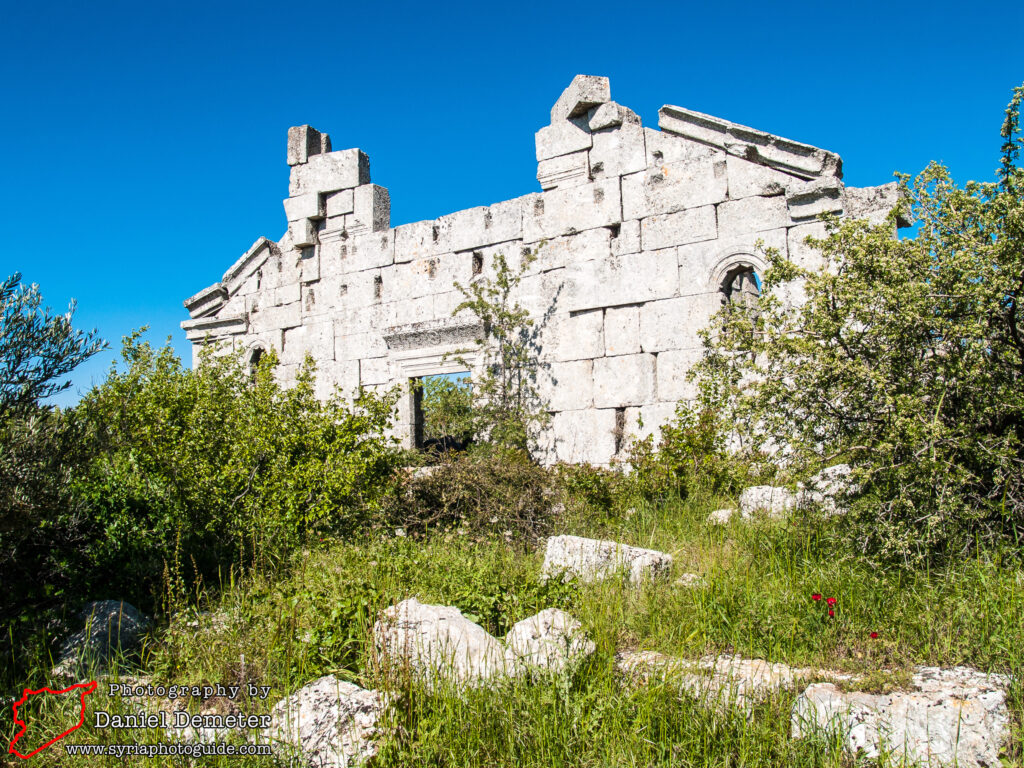
Behyo (بحيو) was clearly one of the largest Byzantine settlements in the region of Jebel al-Aala (جبل الأعلى), and the remains include two sizable churches. The site is located on a mountain crest and has commanding views over the plains to the east and a small valley to the west. While the site covers an extensive area, the state of preservation is generally poor. The facade of the main church, however, is very good condition. The site is also notable for the unusually large stones used in construction.
The site was studied extensively by archaeologist George Tchalenko. The location of a large community at Behyo (بحيو) was found to be somewhat unusual given the lack of arable land and its relative isolation. It is speculated that the village developed in the late Byzantine period after other, more fertile locations, had already been populated. It did not attract settlement until the boom in olive oil prices in the fifth century justified the development of its relatively marginal potential. By this period, the olive oil industry was no longer dominated by the large landlords but had been transformed by the activities of small-holders.
The ruins include a variety of house types of the fifth and sixth centuries including villas, farmhouses, and workers’ cottages. Remains of many olive presses are found around the edges of the ruins. The two churches lie to the east of the settlement. The church on the northeast corner of the ruins dates from the first part of the sixth century but is badly ruined. It employed the same type of sweeping lateral arches as at Qalb Lozeh (قلب لوزة) a little to the north but on a smaller scale. The second, older, church lies immediately to the southwest, its east wall still relatively intact. It dates from the middle of the fifth century and Tchalenko unearthed in it a horseshoe-shaped bema. It takes the form of a basilica with five columns on each side of the central nave. The facades are sober and the scale of the blocks convey an impression of massiveness.
Overall, Behyo (بحيو) is worth visiting for its picturesque setting with plenty of vegetation and impressive views, and would make for a great picnic spot. Although the ruins themselves are largely an incomprehensible jumble of fallen stones, there are a few well-preserved structures to seek out among the chaos.
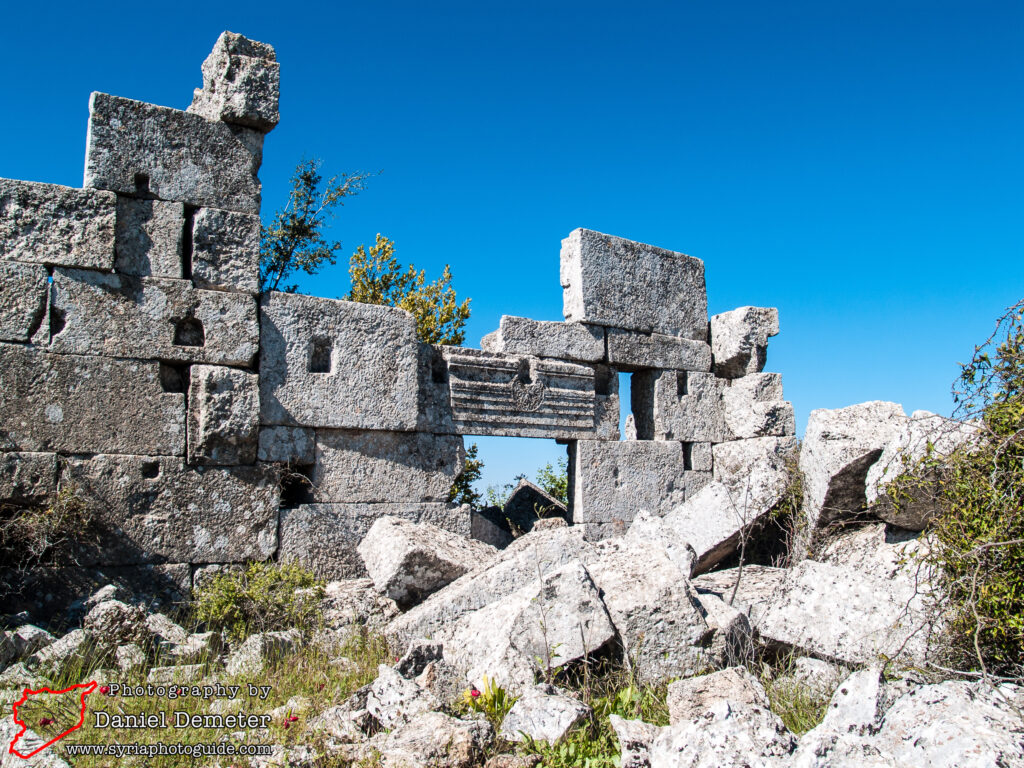
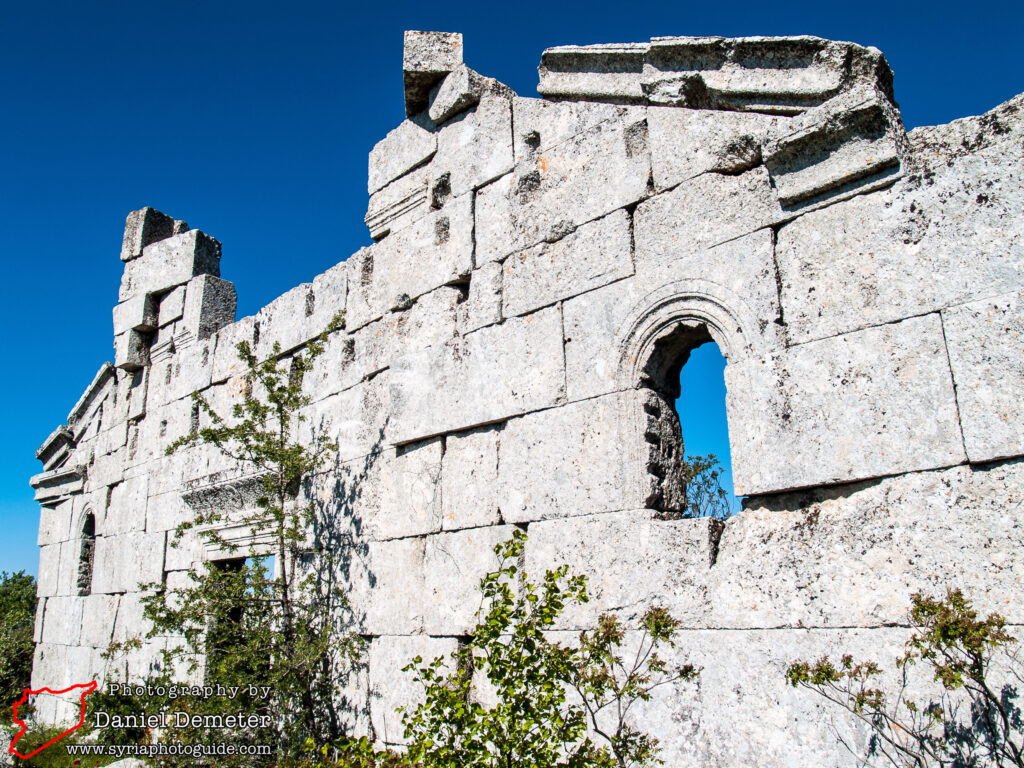
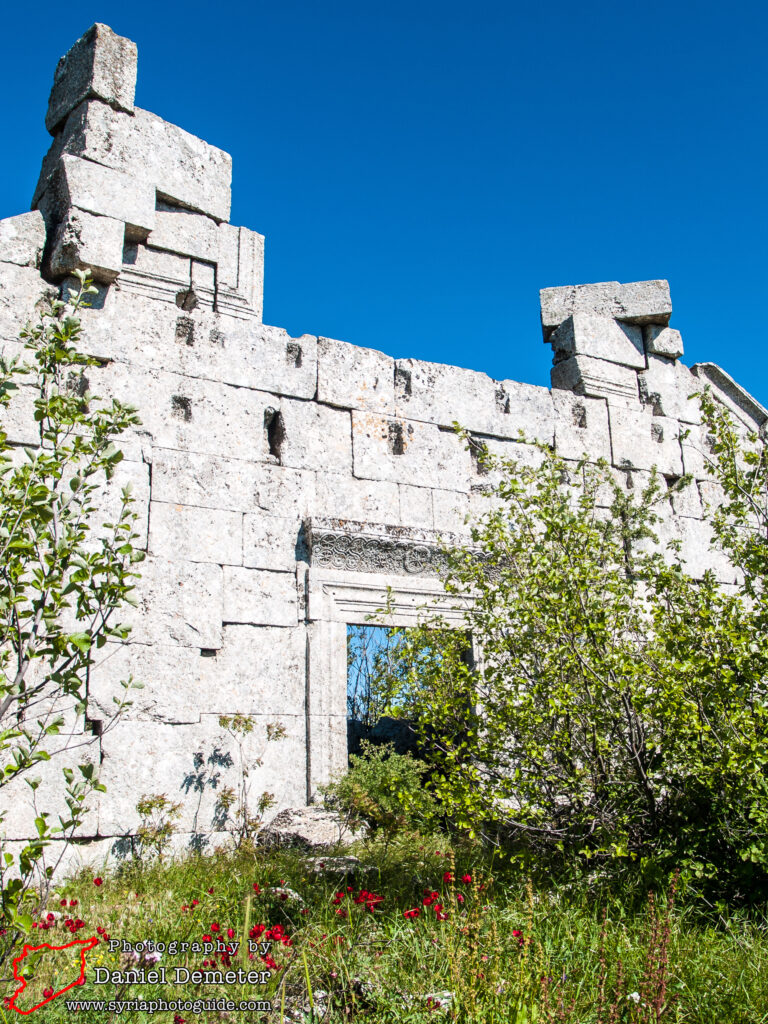
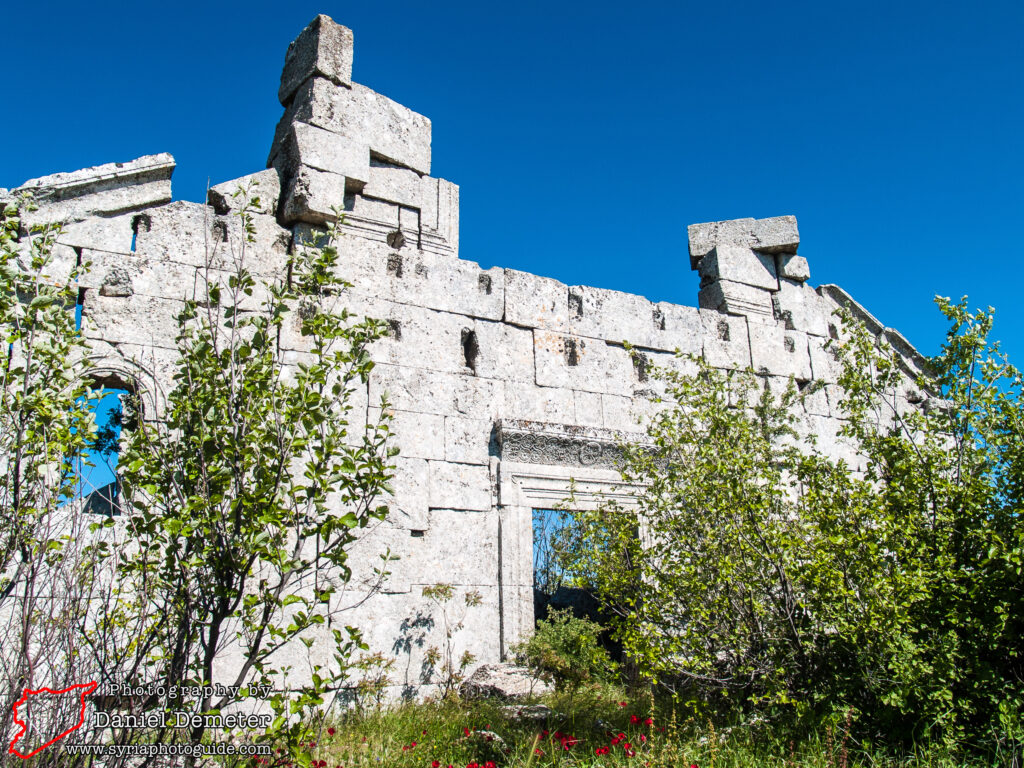
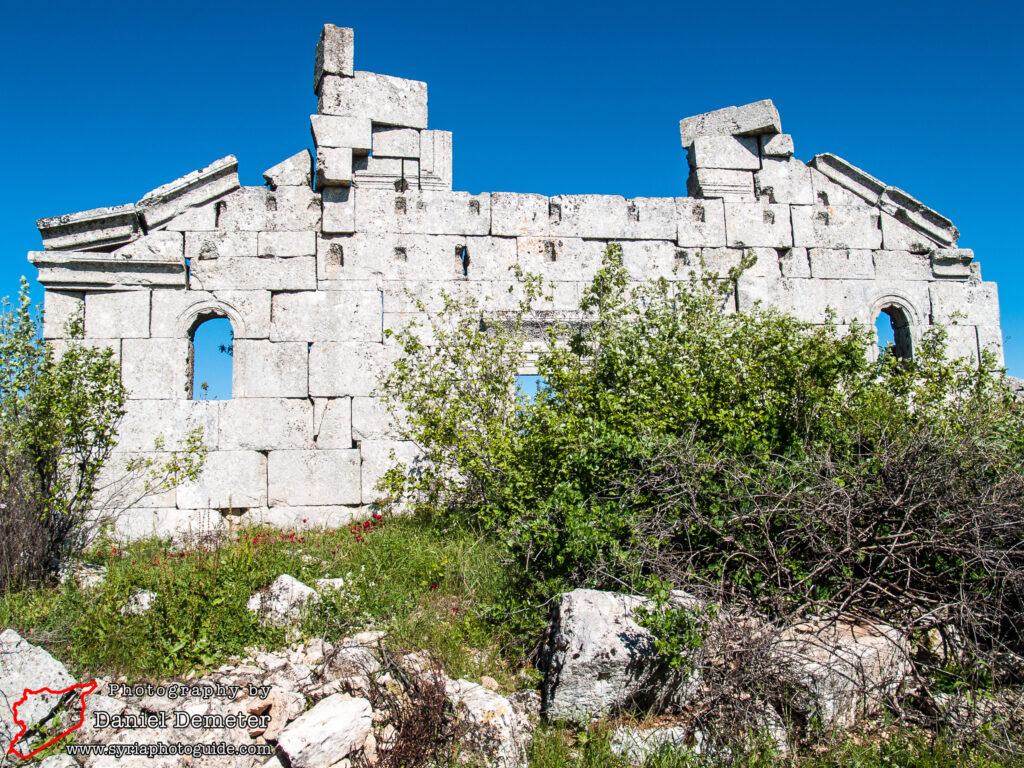
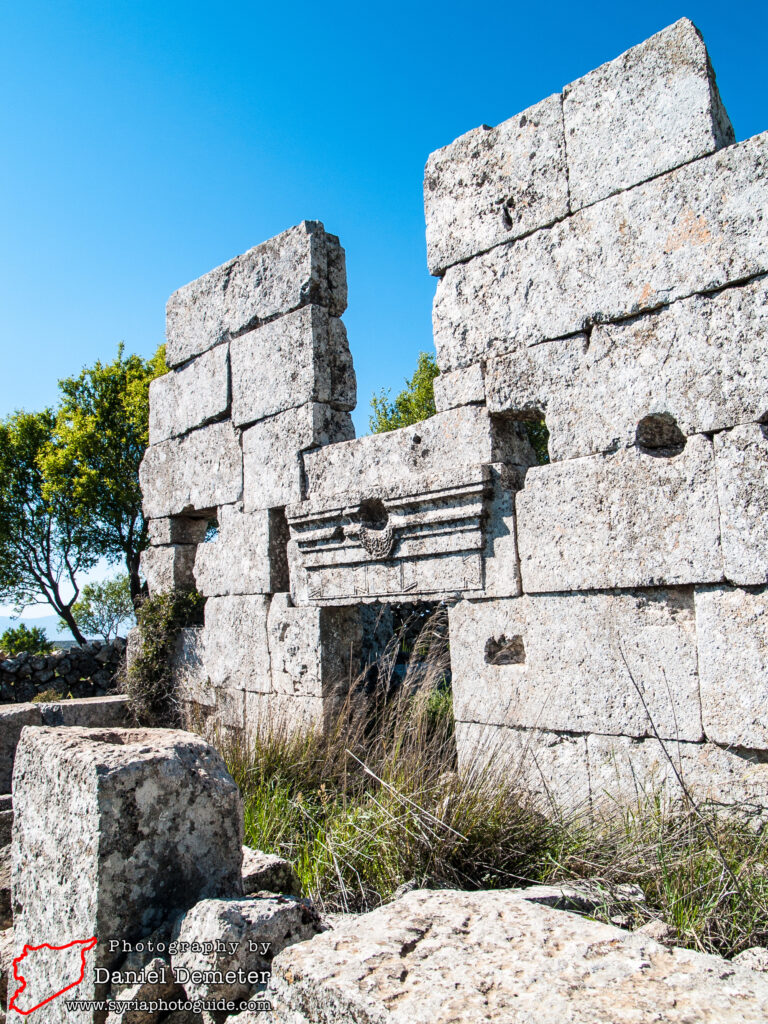
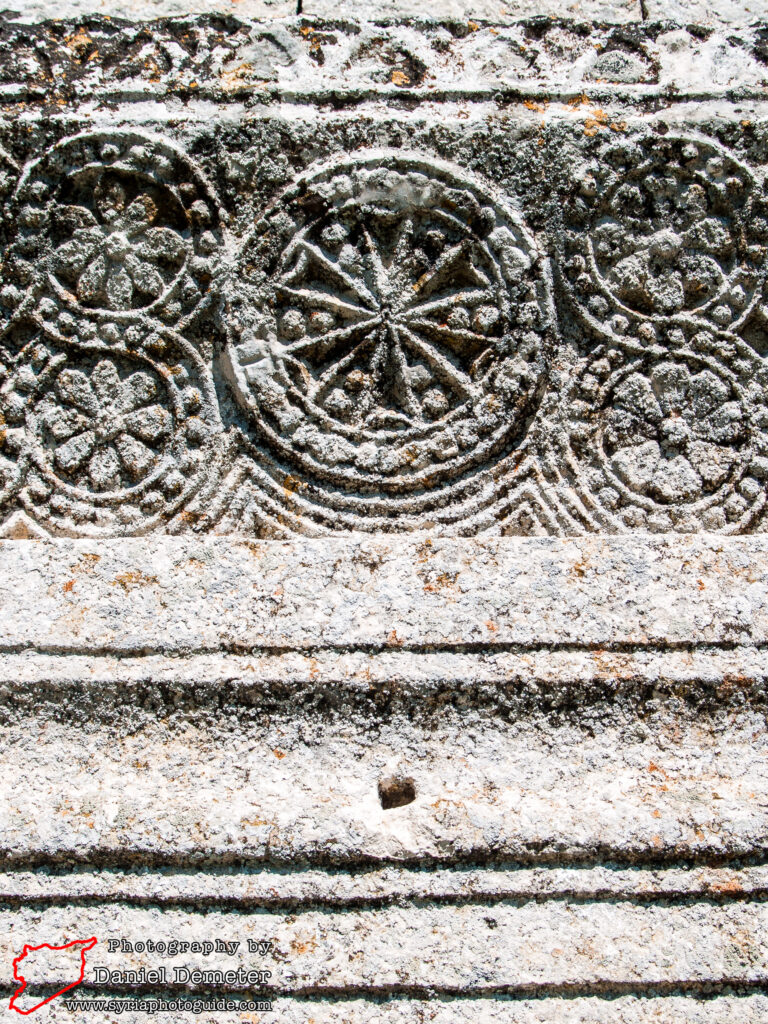

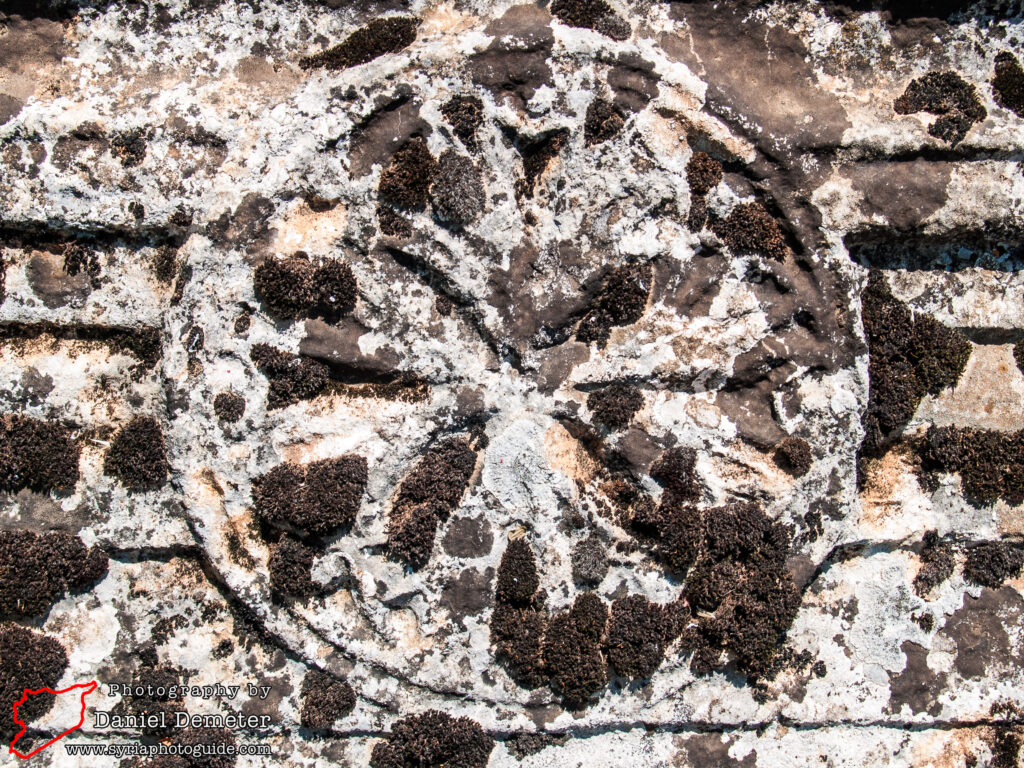
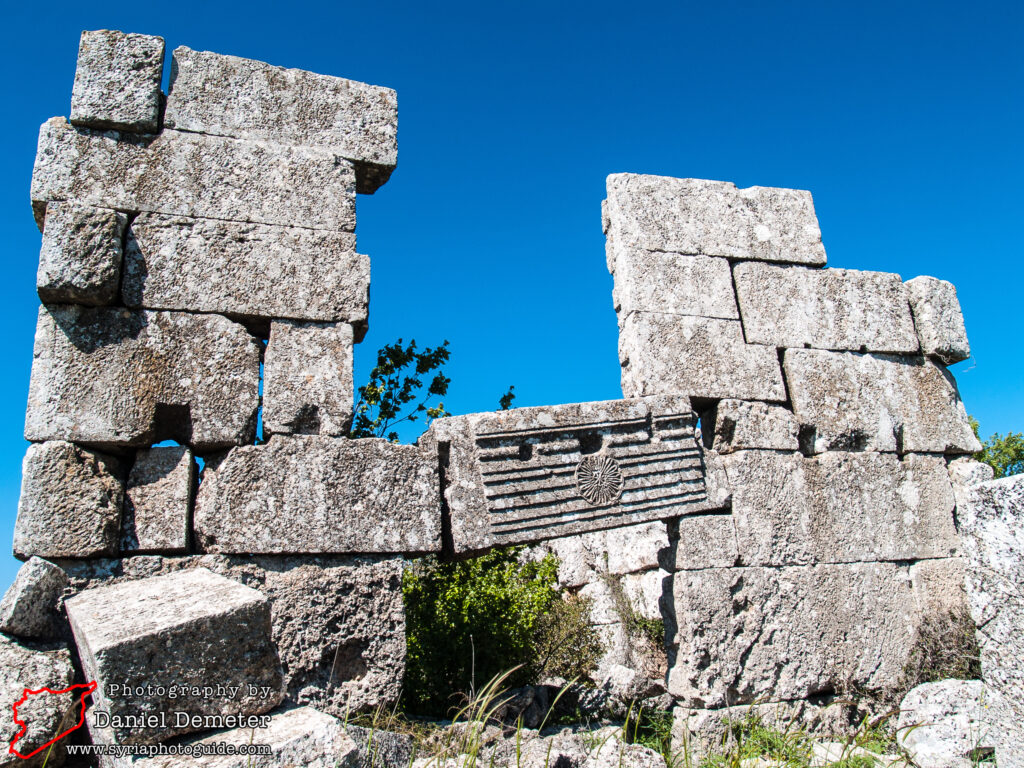
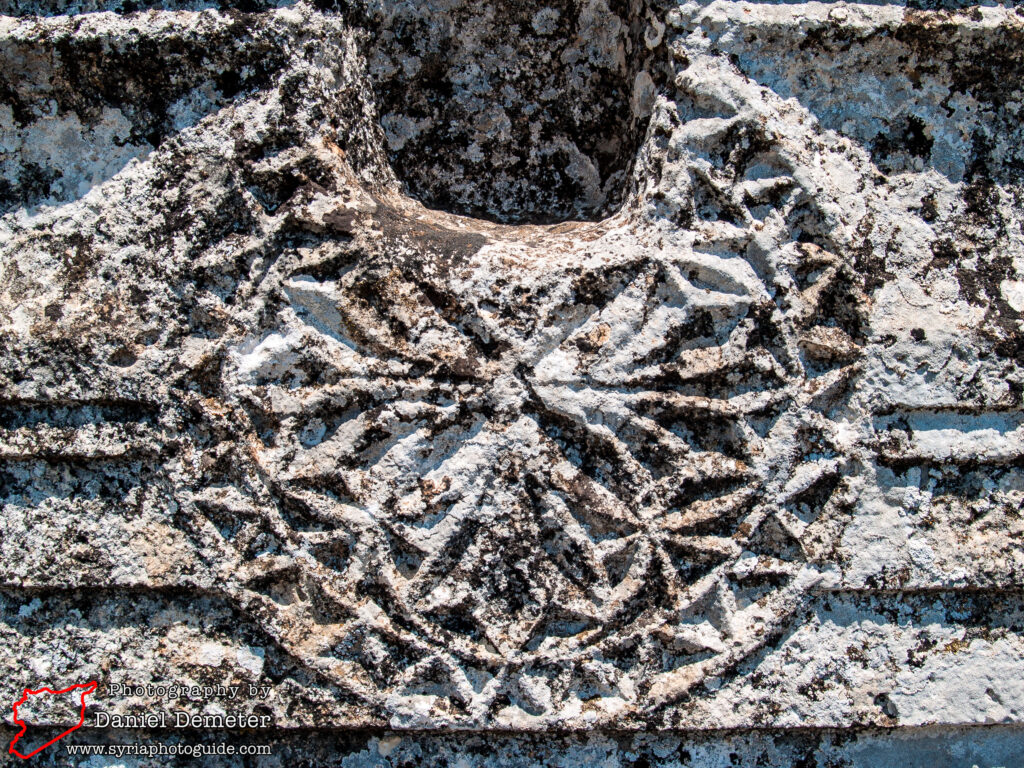
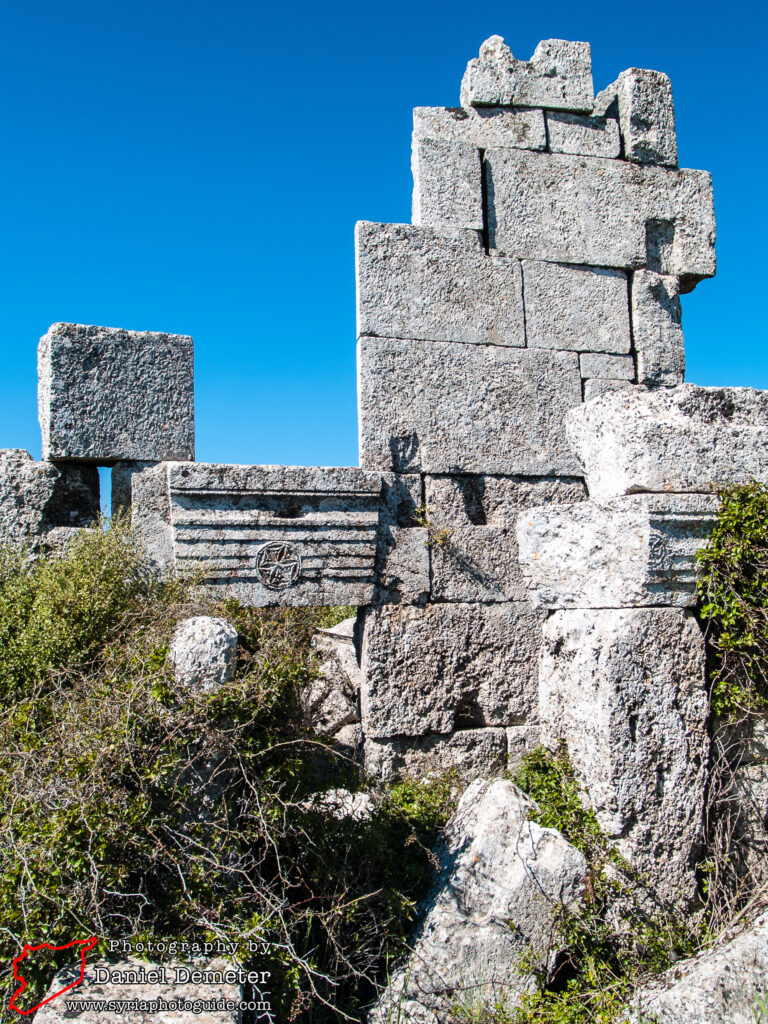
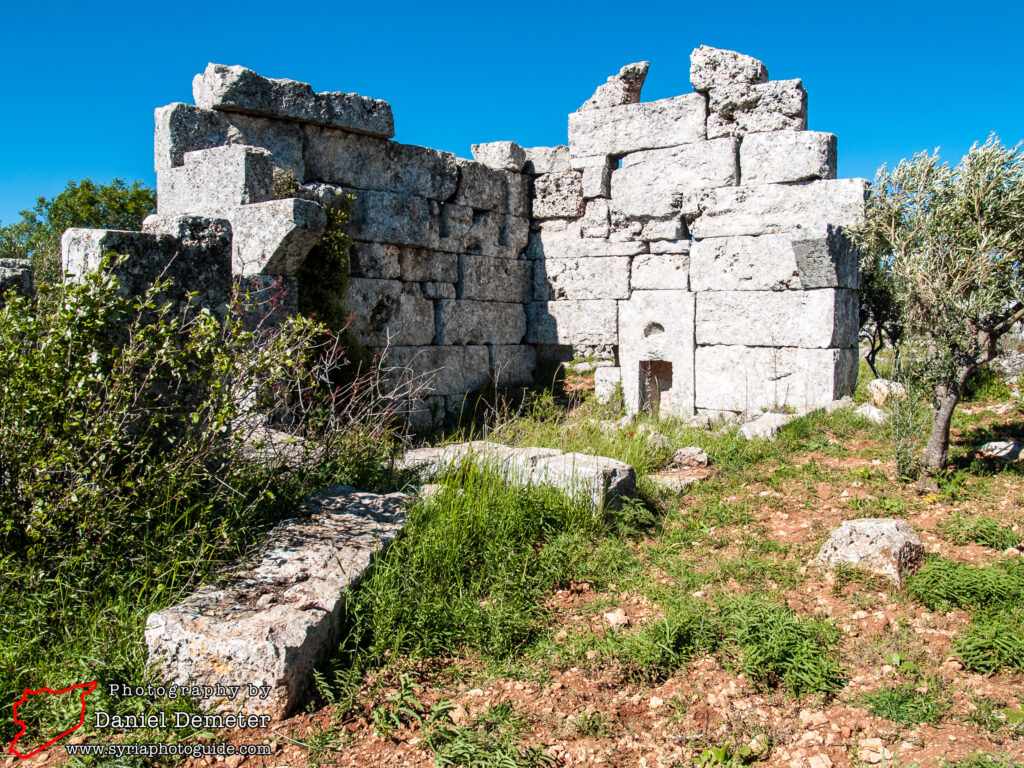
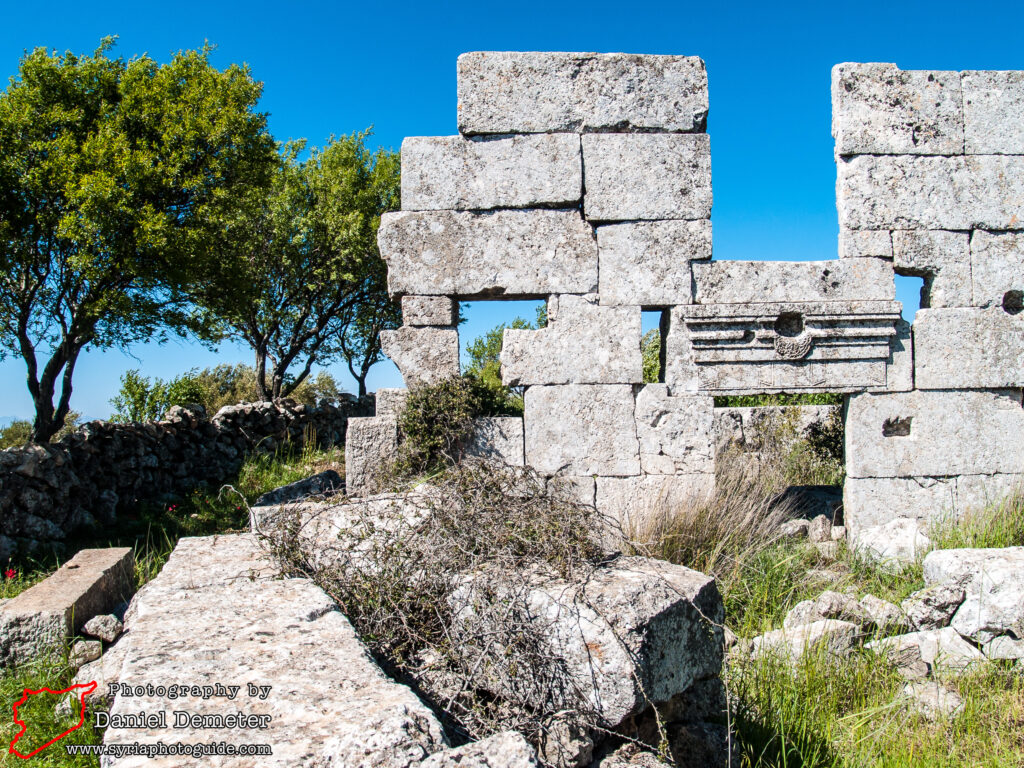
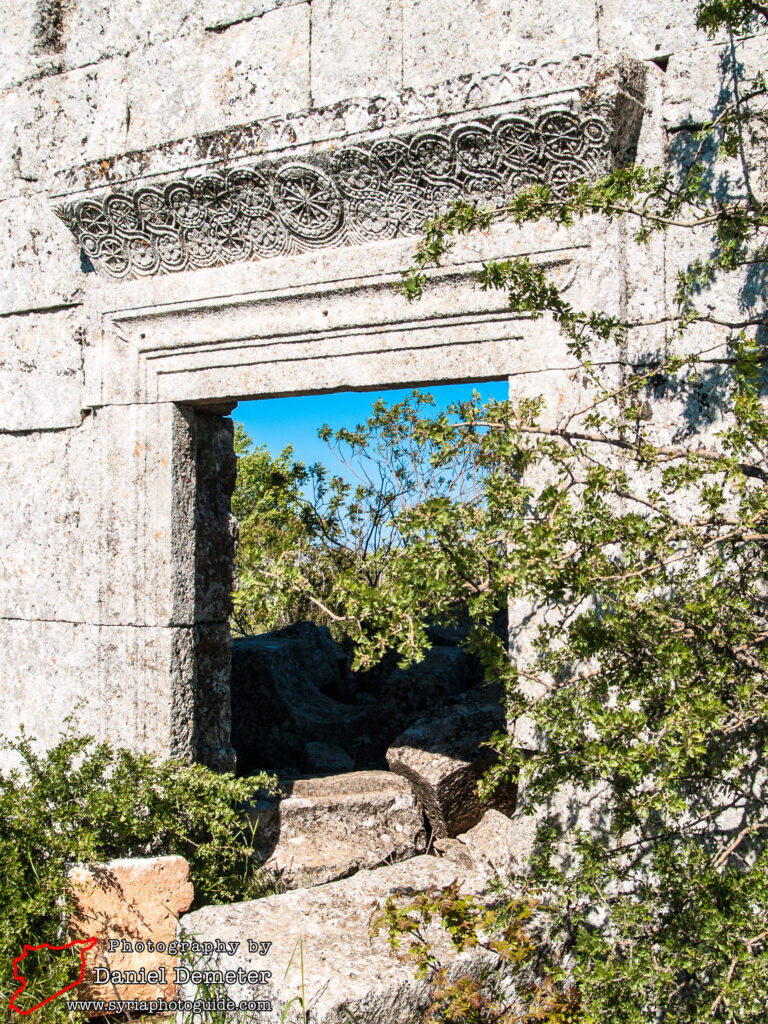
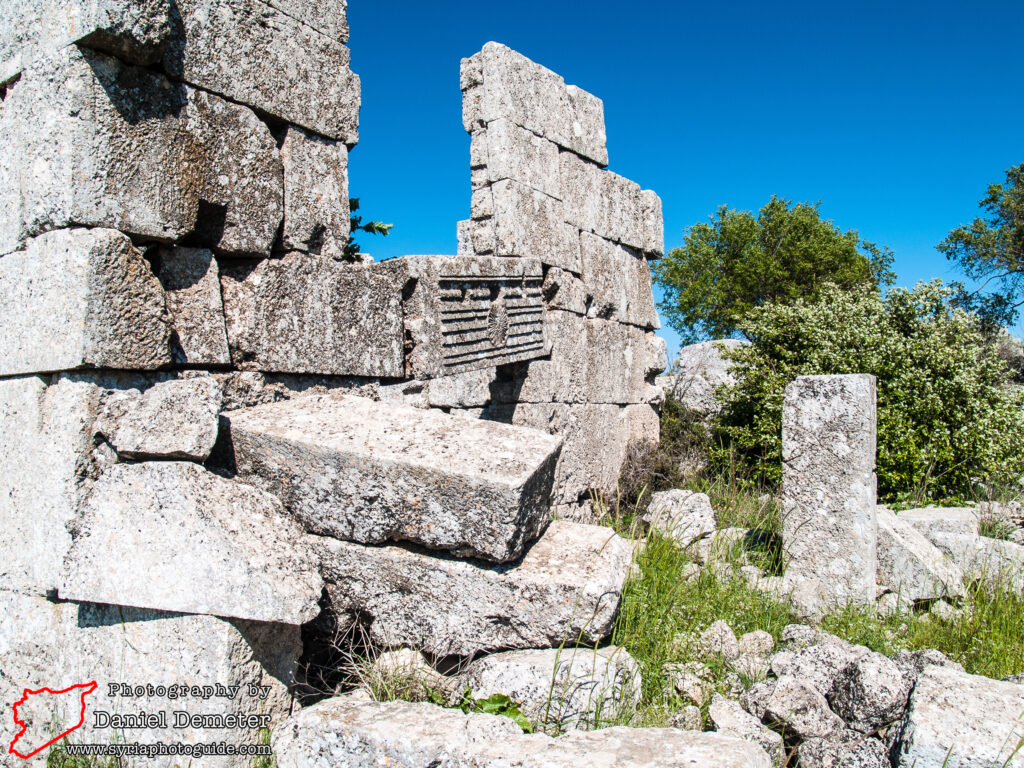
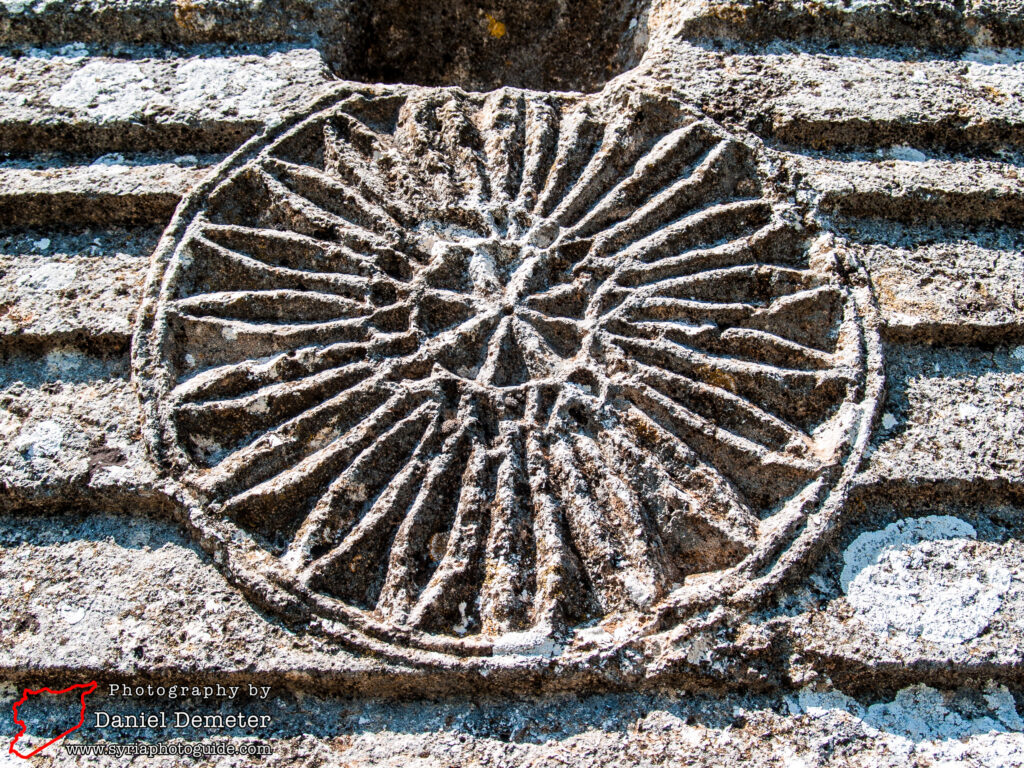
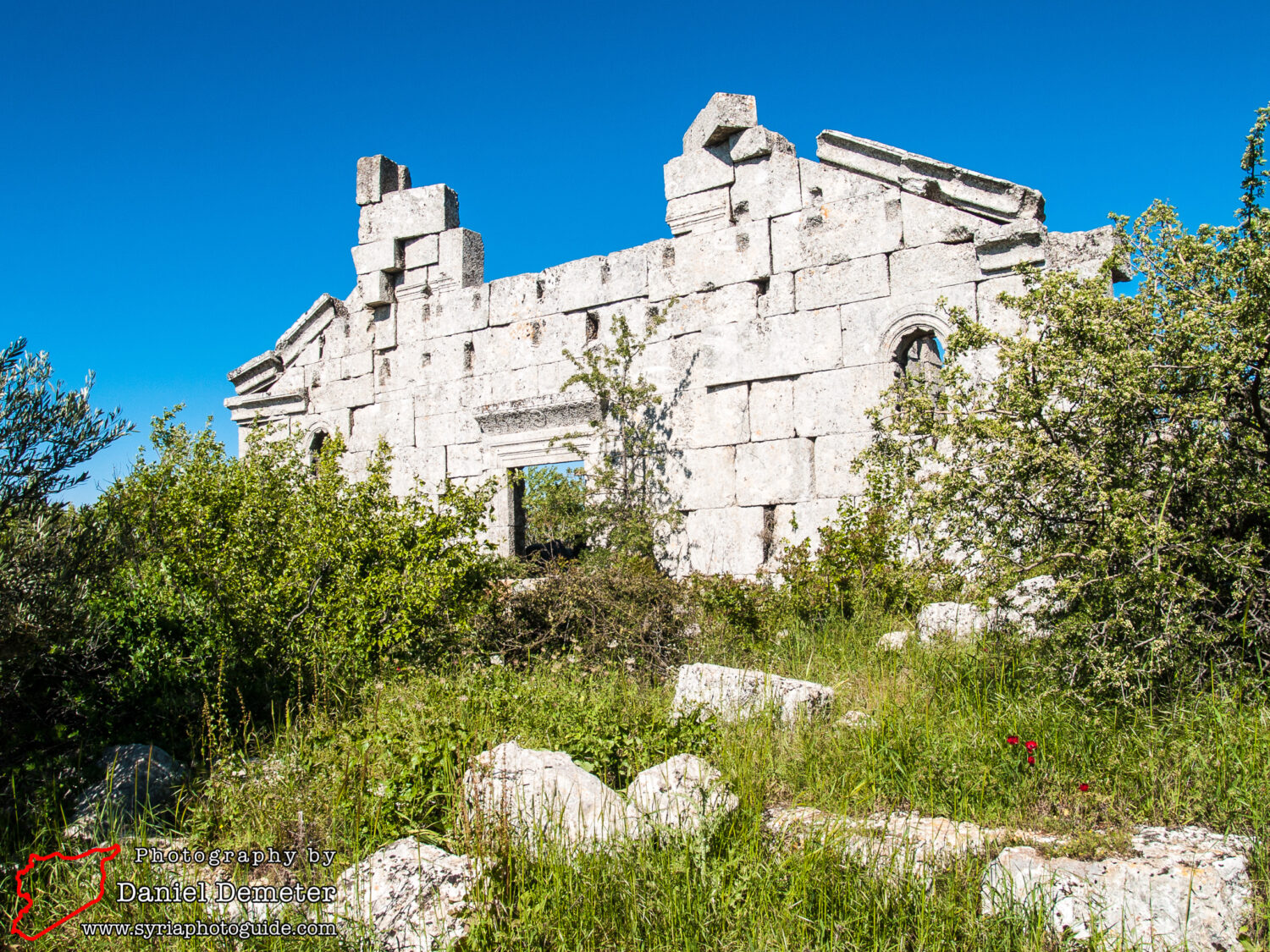
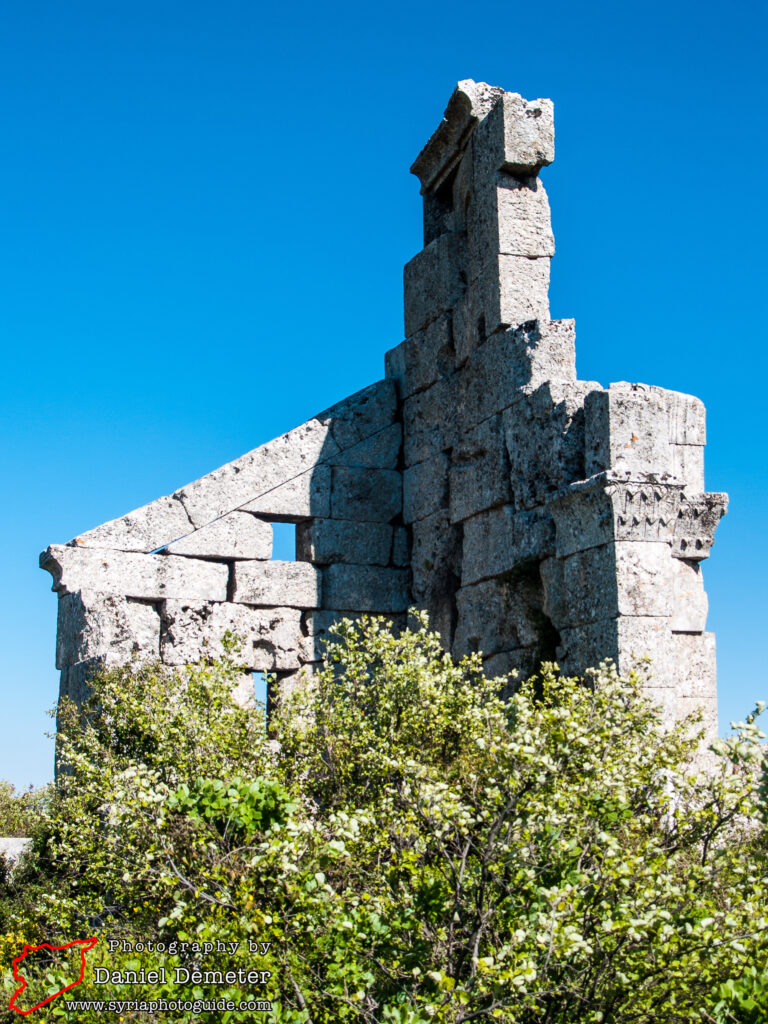
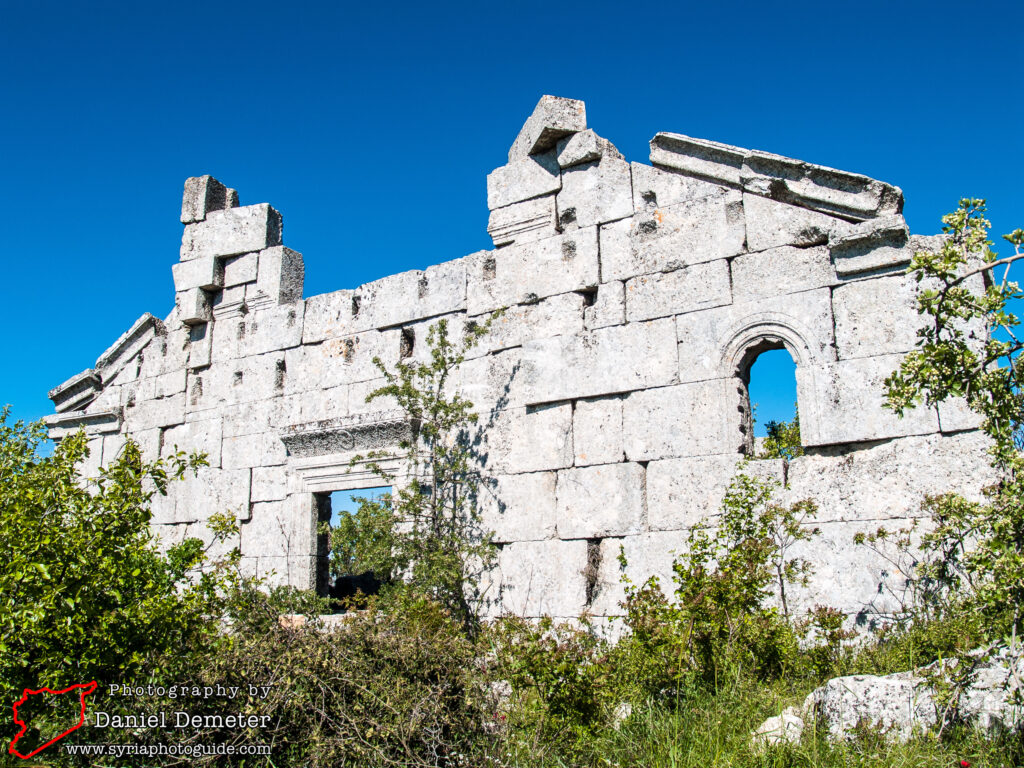
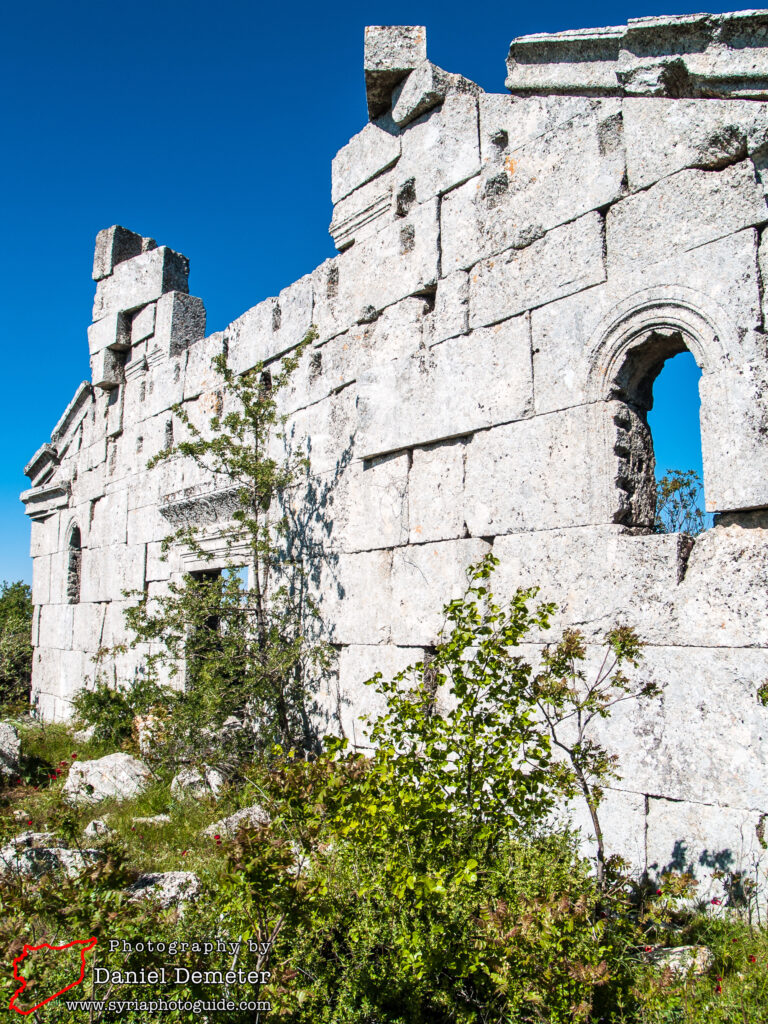
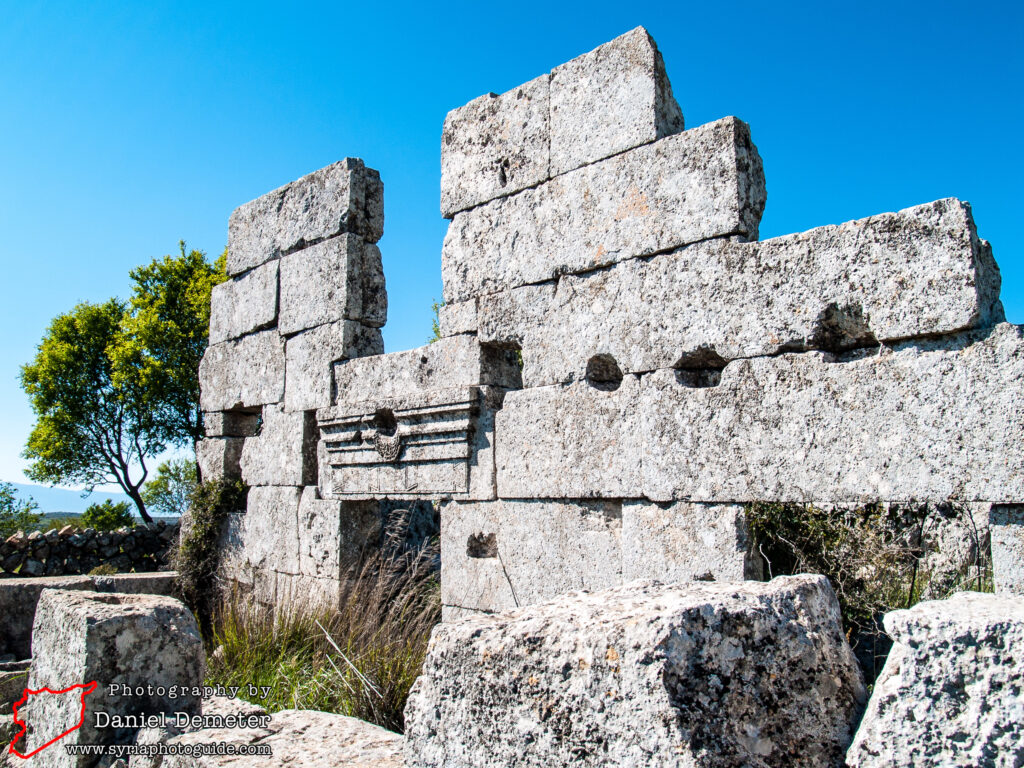
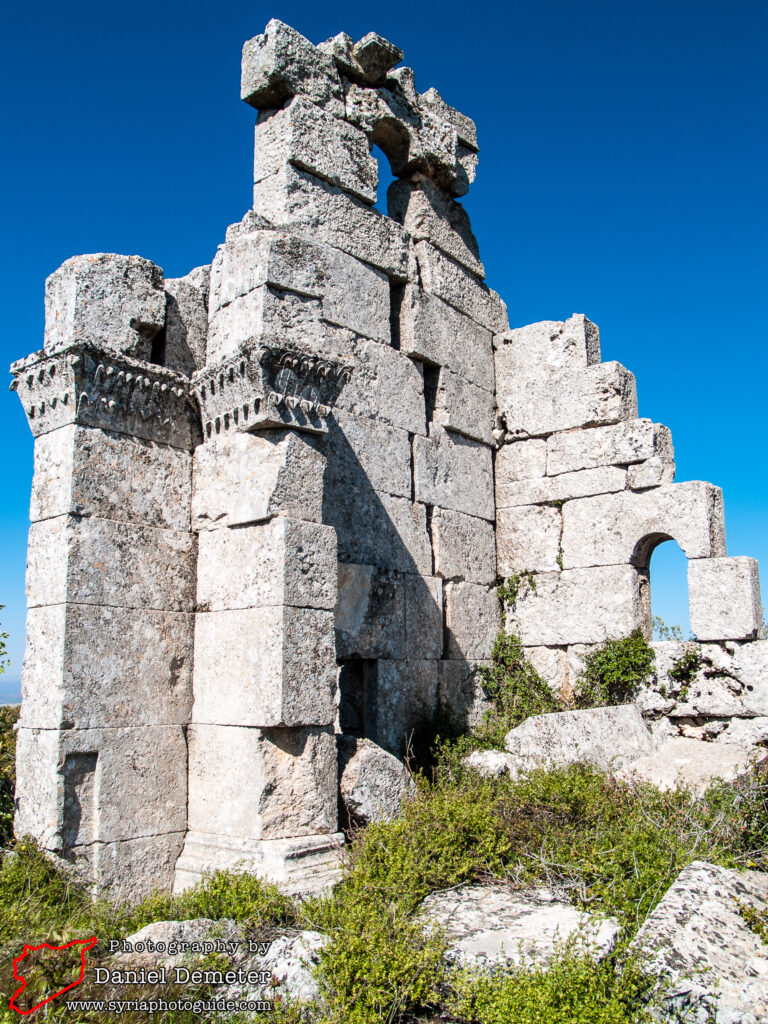
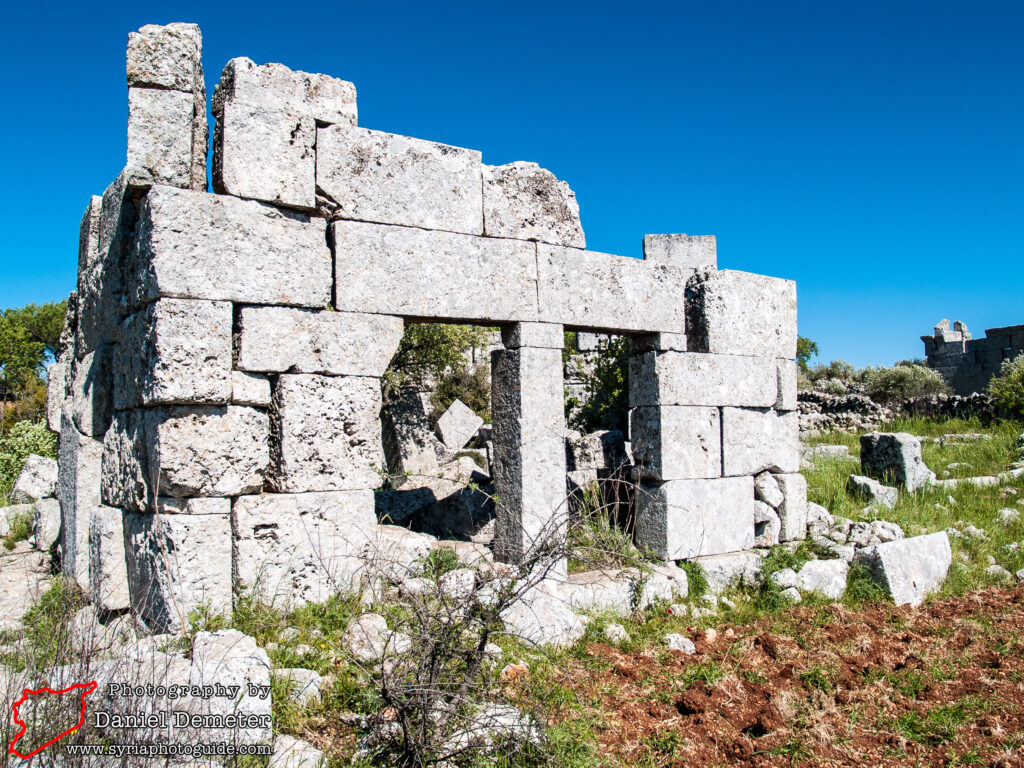
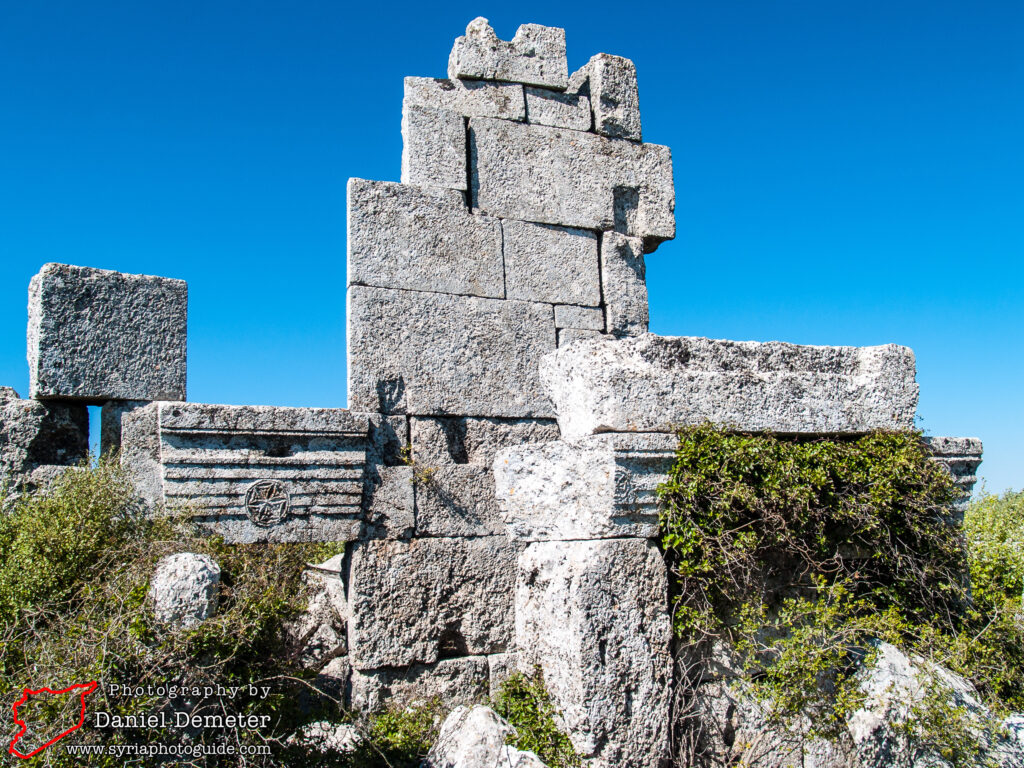
Getting There: There is no regular public transportation into the region of Jebel al-Aala (جبل الأعلى), presenting a challenge for visitors. There are two main routes for getting into the area.
The most common route is via the town of Harem (حارم), to the northwest, which has regular microbus connections with Aleppo (حلب) and Idleb (إدلب). Harem (حارم) is approximately ten kilometers from Banabel (بنابل), the northernmost site in the region, and about fifteen kilometers from Qalb Lozeh (قلب لوزة), the region’s most important site. The road leading up to Jebel al-Aala (جبل الأعلى) begins about two kilometers to the east of Harem (حارم), on the road coming into town from Aleppo (حلب). From there, it should be possible to hitchhike the remaining eight kilometers south to Banabel (بنابل), but traffic is relatively light. The alternative would be to hire a private driver in Harem (حارم).
The less commonly traveled route, which is actually closer to the main site of Qalb Lozeh (قلب لوزة), is via the town of Qurqaniya (قورقنيا), to the east of Jebel al-Aala (جبل الأعلى). Qurqaniya (قورقنيا) has semi-frequent microbus connections with Aleppo (حلب) and Idleb (إدلب) and is about six kilometers southeast of Qalb Lozeh (قلب لوزة). The main road through Qurqaniya (قورقنيا) continues west, then northwest across a small valley. On the opposite end of the valley a steep road ascends to Jebel al-Aala (جبل الأعلى). Qalb Lozeh (قلب لوزة) is found to the left directly beyond this ascent. Traffic seems a bit more frequent on this route, so hitchhiking should be possible, or a private driver could be hired in Qurqaniya (قورقنيا).
Once in Jebel al-Aala (جبل الأعلى), there are approximately eight sites of interest. With an early arrival to the region, they can all be visited in a full day of exploration on foot. Qalb Lozeh (قلب لوزة) is the largest village in the area and the most well-known site, so it may be preferable to start there, especially if traveling the Qurqaniya (قورقنيا) route. If traveling from Harem (حارم), it may be preferable to start at the northernmost site of Banabel (بنابل) and continue south from there.
Behyo (بحيو) is located about three kilometers south of Qalb Lozeh (قلب لوزة), about 500 meters up a dirt track running east of the main road. The site is signposted in Arabic. If you reach the modern village of Kafr Kila (كفر كيلا), you’ve gone too far.
Coordinates: 36°09’09.10″N / 36°34’45.24″E
Transliteration Variants: Bahyo
Rating: 4.5 / 10
